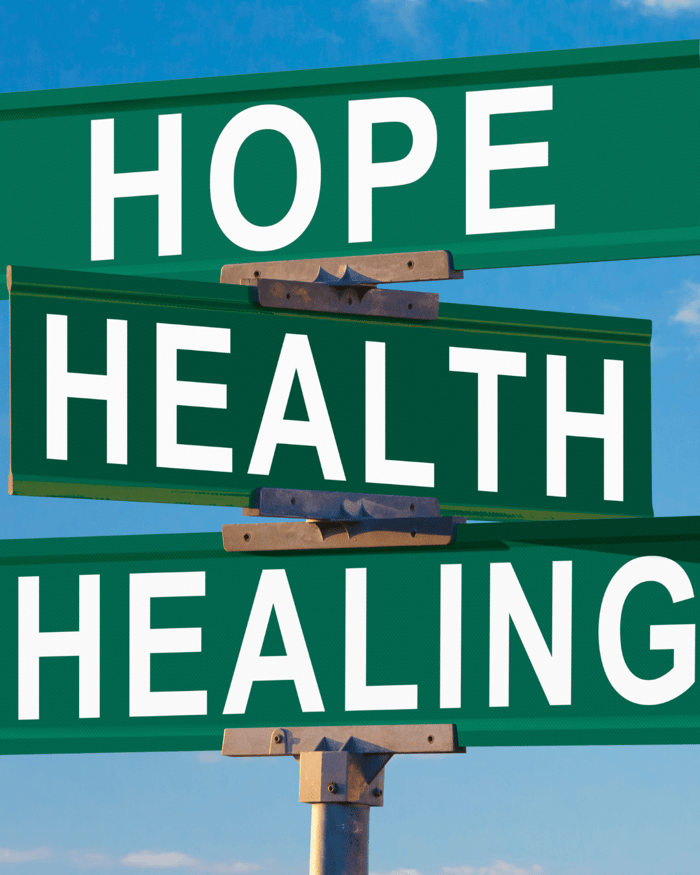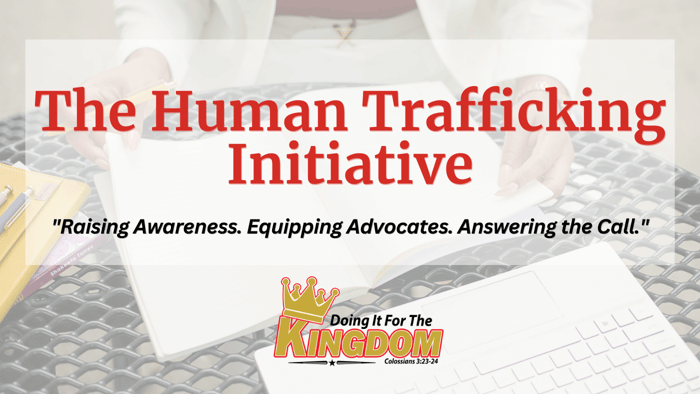Table of Contents
- The Link Between Unhealed Trauma and Vulnerability to Exploitation
- Understanding Trauma and Its Long-Term Effects
- Why Unhealed Trauma Increases Risk of Exploitation
- Grooming Tactics: A Psychological Trap
- Faith and Emotional Healing: The Spiritual Connection
- Case Example: From Victim to Survivor
- What You Can Do: Supporting Healing and Prevention
- Resources for Healing and Prevention
- Final Thoughts: From Wounds to Wisdom
- FAQs
The Link Between Unhealed Trauma and Vulnerability to Exploitation
 In the world of anti-trafficking advocacy and trauma recovery, one critical but often overlooked truth stands out: unhealed trauma increases vulnerability to exploitation. Whether it stems from childhood abuse, abandonment, neglect, or chronic emotional wounds, unresolved trauma can impair an individual’s sense of identity, safety, and worth—making them prime targets for grooming, manipulation, and trafficking.
In the world of anti-trafficking advocacy and trauma recovery, one critical but often overlooked truth stands out: unhealed trauma increases vulnerability to exploitation. Whether it stems from childhood abuse, abandonment, neglect, or chronic emotional wounds, unresolved trauma can impair an individual’s sense of identity, safety, and worth—making them prime targets for grooming, manipulation, and trafficking.
As both a therapist and a minister, I’ve seen firsthand how spiritual and emotional wounds open doors to exploitation. This blog unpacks the connection between trauma and trafficking, highlights common grooming tactics, and offers biblical and therapeutic guidance for healing and prevention.
Understanding Trauma and Its Long-Term Effects
Trauma is any deeply distressing or disturbing experience that overwhelms an individual's ability to cope. Trauma doesn’t just result from significant disasters or violent acts—it can also come from repeated emotional neglect, bullying, toxic relationships, and unmet emotional needs.
Unhealed trauma can impact:
Emotional regulation
Self-worth and identity
Attachment and relationships
Decision-making and risk assessment
The ability to discern manipulation or danger
People with unresolved trauma often carry invisible wounds that affect how they see themselves and others. They may crave love, validation, and security so profoundly that they ignore red flags or accept harmful treatment just to feel seen or valued.
Why Unhealed Trauma Increases Risk of Exploitation
When someone hasn't processed or healed from past pain, they are more likely to:
Accept abusive behavior as normal – If trauma taught them that love is conditional or painful, they may expect future relationships to follow the same pattern.
Struggle with boundaries – Unhealed trauma often results in blurred boundaries, making it easier for traffickers or groomers to overstep.
Feel desperate for connection – This can make them vulnerable to predators who offer affection, money, or false promises.
Operate from shame or secrecy – Traffickers thrive in silence. Victims with unhealed shame may avoid seeking help or believe they deserve what’s happening.
Many traffickers are skilled manipulators who look for these very signs of vulnerability. They often ask questions like: “Do you feel alone?” or “Does anyone really care about you?”—exploiting unmet emotional needs to build trust and gain control.
Grooming Tactics: A Psychological Trap
Grooming is a manipulative process used by abusers and traffickers to gain the trust of their target before exploitation. It is especially effective when the individual has unhealed emotional wounds.
Common grooming strategies include:
Love bombing (excessive flattery, attention, and promises)
Isolation (cutting off healthy relationships)
Gaslighting (causing confusion about reality and self-worth)
Faux support (pretending to be the only one who “gets” them)
When someone has a history of trauma, they may interpret these tactics as genuine care or affection. Traffickers and abusers use psychological tactics to recreate the power imbalances that the victim already knows.
Faith and Emotional Healing: The Spiritual Connection
From a spiritual perspective, trauma can distort not only how we see ourselves but also how we see God. People with unresolved wounds may believe: 
“God has forgotten me.”
“I’m too broken to be loved.”
“My voice doesn’t matter.”
But the truth is found in scriptures like:
“He heals the brokenhearted and binds up their wounds.” (Psalm 147:3)
“You are fearfully and wonderfully made.” (Psalm 139:14)
Faith-based trauma healing involves:
Inviting Jesus into the memories and lies formed during trauma
Releasing pain, shame, and fear through prayer, therapy, and deliverance
Rebuilding identity based on God’s truth, not past abuse
Practicing community and accountability within the Body of Christ
When trauma is healed, vulnerability turns into discernment. Survivors learn to see themselves as beloved, worthy, and equipped to identify and reject manipulation.
Case Example: From Victim to Survivor
Let’s take the story of Alicia (name changed), a young woman who grew up in a home where emotional neglect was common. She never felt seen, heard, or valued. At 15, she met a man online who showered her with compliments and promised her a better life.
Over the next six months, he isolated her from family, introduced drugs, and manipulated her into commercial sex acts. Alicia believed this was “love” because it mirrored the same cycles of conditional affection she experienced in childhood.
It wasn’t until a trauma-informed advocate helped her recognize the emotional patterns and lies that she began to heal. With counseling, prayer, and support from a faith-based organization, Alicia was able to reclaim her worth and now helps others avoid the same traps.
What You Can Do: Supporting Healing and Prevention
Whether you’re a pastor, therapist, parent, or advocate, here are steps you can take to protect and empower others:
1. Normalize Conversations About Trauma
Create spaces in churches, schools, and homes where people can talk openly about emotional pain without fear of judgment. Trauma is not a moral failure—it’s a wound that needs tending.
2. Recognize the Signs
People with unresolved trauma may exhibit:
People-pleasing behavior
Chronic anxiety or depression
Self-harm or substance abuse
Difficulty trusting others
Oversexualized or withdrawn behavior
Being alert to these signs allows early intervention and support.
3. Promote Trauma-Informed Care
If you serve in ministry or mental health, take steps to become trauma-informed. This includes understanding how trauma affects behavior, avoiding triggering language, and knowing when to refer someone for deeper clinical care.
4. Provide Healing Pathways
Offer faith-based counseling or partner with Christian therapists
Start a healing group or recovery ministry
Encourage journaling, prayer, and scriptural reflection
5. Educate About Exploitation
Teach about the links between trauma and trafficking in workshops, Bible studies, or support groups. Equip youth and parents with tools to recognize grooming and manipulation.
Resources for Healing and Prevention
The Body Keeps the Score by Dr. Bessel van der Kolk – A foundational resource on how trauma affects the body and mind.
Restoring the Foundations – A Christian inner healing ministry focused on integrating prayer, forgiveness, and identity restoration.
Shared Hope International – Provides survivor-informed advocacy and educational tools to prevent trafficking.
Final Thoughts: From Wounds to Wisdom
Unhealed trauma doesn’t disqualify anyone from a future filled with hope—it’s simply a sign that healing is needed. The enemy uses past wounds to keep people stuck, but God redeems even the deepest pain.
When we heal, we break the cycle. We reclaim power, dignity, and the ability to protect ourselves and others from harm. As leaders, parents, and advocates, it is our responsibility to recognize how trauma shapes vulnerability—and to offer grace, tools, and truth to rewrite the narrative.
Join our email list to receive more educational tools, mental health resources, and spiritual insights on preventing exploitation and building Kingdom wholeness.
Let’s not just raise awareness—let’s raise up healed and whole people who walk in freedom, truth, and purpose.
FAQs
1. How does unhealed trauma increase vulnerability to exploitation?
Unhealed trauma can distort a person’s self-worth, boundaries, and ability to discern danger. Individuals with unresolved emotional wounds may crave love, affirmation, or stability, making them more susceptible to grooming, manipulation, or accepting abusive behavior as “normal.” Predators often target those with visible emotional or relational needs.
2. What are some signs that someone may be dealing with unhealed trauma?
Some common signs include chronic anxiety, low self-esteem, people-pleasing, difficulty trusting others, sudden emotional outbursts, withdrawal, oversexualized behavior, or codependency. These behaviors are often survival responses rooted in past pain, not personality flaws.
3. What is the difference between trauma-informed care and traditional counseling?
Trauma-informed care acknowledges the impact of trauma on a person’s brain, body, and behavior. It prioritizes safety, trust, and empowerment, avoiding re-traumatization. While traditional counseling may focus on symptoms, trauma-informed approaches consider the root cause and help clients heal holistically.
4. How can churches and ministries support healing from trauma?
Churches can offer a safe, judgment-free space where people feel seen and heard. They can host support groups, partner with Christian therapists, provide deliverance or inner healing prayer, and educate members about trauma, boundaries, and exploitation through biblically grounded teachings.
5. Is it possible to fully heal from trauma and avoid future exploitation?
Yes—healing is absolutely possible. Through a combination of therapy, faith-based inner healing, community support, and consistent self-work, individuals can rebuild identity, restore boundaries, and walk in freedom. As healing progresses, vulnerability turns into discernment, wisdom, and strength.


